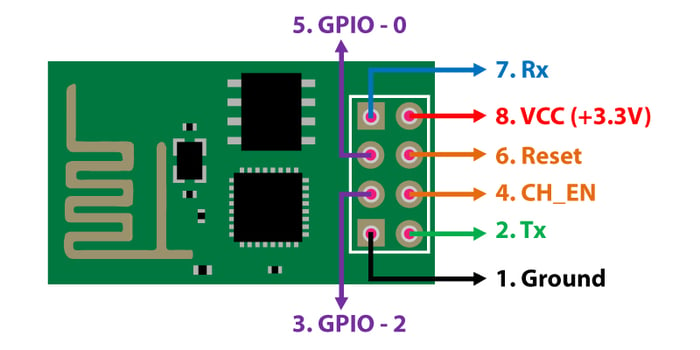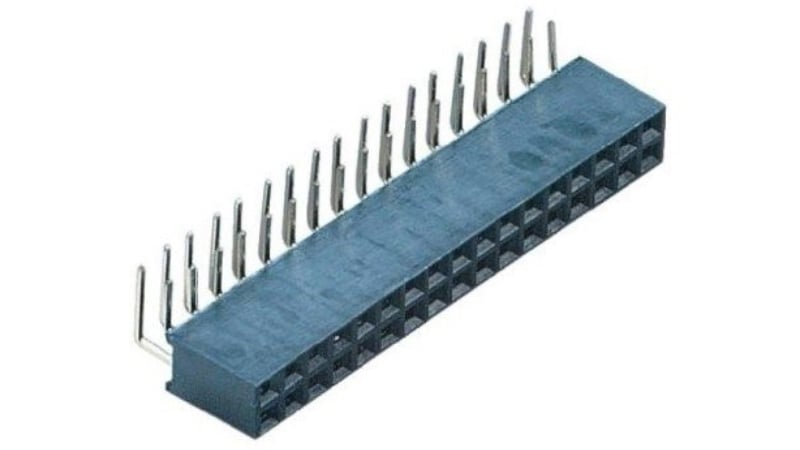Many applications do not run as standalone systems. Instead, there will be multiple subsystems involved that can perform a variety of functions for the work output or to monitor internal systems to ensure optimal and safe performance. These systems need additional logic support to keep systems running or to improve system performance. However, there will be times when the application itself does not have these logic functions originally installed. So, another system must be added into the application to provide these functions.
General-purpose input/output (GPIO) peripherals on integrated circuits (IC) can provide these additional logic functions. The GPIO itself does not come with a specific function. Instead, the peripheral consists of input and output pins that can be designed and customized to provide general and advanced input/output functions based on what the end product or subsystem is supposed to accomplish. While not all integrated circuits come with GPIOs, they are commonly found in chips that offer multifunctional purposes for high-performance applications.

Example of a standard GPIO design.
GPIOs in Battery Packs
GPIOs are found in a range of systems, such as chips in audio and video cards, system-on-chip (SOC) circuits, system on a module (SOM) devices, and power managers. Some of the most common functions of a GPIO pin include the following:
- Being input or output configurable based on the software
- Setting digital output values
- Reading digital output values
- Creating an interrupt when input values change
- Becoming enabled and disabled
These integrated circuits can also be found in battery packs for electronic devices such as a cell phone. A GPIO in a battery pack may be used to provide different regulated outputs for a device when there are several systems drawing power from the battery pack. They can also be used to control the battery's subsystem. As personal electronic devices are becoming smaller but offering higher power consumption to run multiple functions, GPIO pins can be used to control costs for analog signal chain components.

Example of a universal GPIO header.
GPIO Options for Battery Packs
The types of GPIO options to place in integrated circuits for custom battery packs will be dependent on what the customer requires for the battery pack or for the application. Standard GPIO options include system current monitoring and battery voltage monitoring.
The system current monitoring function is desired when the device or application may not operate properly when the voltage drops to a certain extent across the resistor. The IC may be designed to try to monitor this drop for very low power components using 10 microvolts up to hundreds of microvolts. The GPIO pins will power the amplifier that will monitor the voltage drop and help to fully maximize the battery pack’s life.
When a regulated GPIO is used for battery voltage monitoring, it will provide both the supply voltage as well as the circuit's voltage reference. A comparator device can compare several voltages while providing an output signal regarding which voltage is higher. If the battery voltage drops below a certain value, or goes higher than the provided power supply, the comparator device can provide the required function, such as power sequencing so components will power up or power down at specified time intervals.
There may also be the need to add additional GPIO options to the battery pack. The options that can be placed into the battery design will depend on the application and functions. These options may include the following:
- Controlling on/off functions for LED indicators
- Reading indicators for internal hardware status
- Automated production BIT
- Activating multiple battery banks or switching power between battery banks
- Adjusting the onboard voltage regulators for the fuel gauges
- Protect the IP by self-destructing (typically used for military applications)
Battery Pack Sizes and Chemistries for GPIO Options
One of the top considerations is the size of the battery pack in relation to the application. While larger applications can have multiple battery packs with different chemistries placed in a parallel or a series, smaller applications have space limitations. A reason that GPIO pins are desired in smaller applications is to perform certain functions, such as regulating the voltage, without needing to add an external voltage regulator device to the application. This helps application designers as they can create the application-specific integrated circuits (ASIC) in smaller sizes while incorporating the desired number of GPIO pins that will be programmed with desired functions.
The number of pins on the integrated circuit can vary; some circuits can have up to 24 or more pins. The input and output pins can all be placed on the same side, on either side of the circuit or on all four sides. The size of the integrated circuit will dictate the number of GPIO pins and the options that can be provided. Some ICs can come as square millimeter and even nanometer sizes.
While integrated circuits can be used in battery packs using various battery chemistries, they are being used more often with lithium-based battery chemistries. These GPIO functions can play a vital role in regulating battery voltage and monitoring current in lithium ion battery packs. They can prevent failure and damage to the battery as well as control charging and discharging cycles.
Keep in mind that the voltage that will be needed for the application will dictate whether GPIO pins can be used. GPIO pins can handle voltages of up to 5V. A device requiring a higher voltage can cause damage to the GPIO pins. Most low-level power applications will range around 2.0V to 3.6V, although lower voltages of 1.7V operating ranges can be provided.
Electronics Needed for Above Standard GPIO Options
The electronics that will be needed for high-level ASIC integrated circuits with advanced GPIO options will again be based on what the functions will accomplish. The equipment that is typically used for the GPIO is the GPIO pin board, pin expansion cables, and a 400-pin breadboard. Electronics used with the GPIO can include:
- LED indicators
- Switch inputs
- Motors
- Analog sensors
- Peripheral clocks
Summary
Always keep in mind that costs will dictate the types of electronics used in GPIO options. Considering the design of the application, and what features can be added into the design to provide specific functions that do not need to be offered by the GPIO on the battery pack, can help to figure out the total battery pack costs.
Key Takeaways
- GPIO expands functionality in battery packs: General-purpose input/output (GPIO) pins add configurable logic functions for monitoring, control, and subsystem management when not built into the core application.
- Common GPIO uses in battery systems: Functions include current and voltage monitoring, LED control, on/off switching, cell balancing, and advanced options like powering multiple banks or even secure self-destruct for military designs.
- Size and chemistry influence GPIO integration: Smaller battery packs often rely on GPIOs to regulate voltage or reduce external components, while lithium-based chemistries especially benefit from GPIO monitoring for charging, discharging, and safety.
- Design flexibility depends on IC pin count: Integrated circuits may include up to 24+ GPIO pins, with placement options that allow engineers to customize functionality while balancing cost, size, and performance needs.
- Voltage limitations must be respected: GPIO pins typically handle up to 5V, making them well-suited for low-power applications in the 1.7V–3.6V range, but unsuitable for higher-voltage systems without added protection.
















